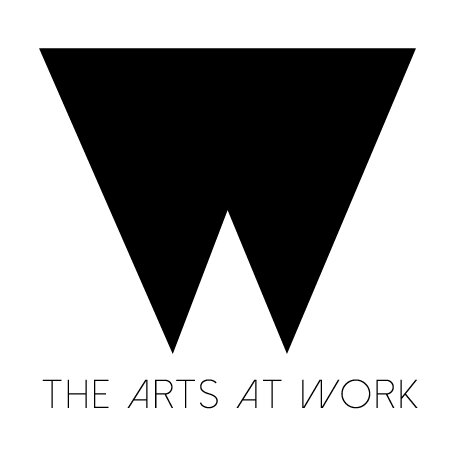Design Thinking: Bauhaus Philosophy and an Inclusive Future
Although Walter Gropius founded the Bauhaus nearly a century ago, the movement’s influence on design is ubiquitous. Its emphasis on clean lines and form/function unity is everywhere – from street signs to home furnishings, to the smartphone you may be reading this on. As the Bauhaus philosophy approaches its centenary, we believe that its less visible tenets are similarly relevant to contemporary life and, if adopted, have sweeping implications for progressive future.
In addition to advocating for beauty in everyday life, the Bauhaus believed in:
- The elimination of creative hierarchies (something we feel strongly about)
- A focus on collective benefits and widespread access
- Art as a means of problem solving in modern society
- The artist’s role in society as an active participant
- That good designs should produce no waste
Digital technologies provide ideal environments in which to expand these tenets. “Good design creates great experiences” by making connections between ideas, objects and events that may not be immediately apparent. These connections create affinities between diverse individuals and disparate communities, and provide opportunities to remove barriers – physical, emotional, psychological. It’s true: collective creative effort generates dynamic results.
At WÆRK, we adopt a Bauhaus philosophy and employ it in each project and within all of our operations. We bring beauty to everyday life by equally including perspectives from the arts, sciences and humanities in all of our projects. We take our clients on journeys through the grey areas that color the spectrum of life, and help them to build things, experiences and ideas that matter, through a focus on revealing understanding.
Widespread adoption, of the Bauhaus philosophy's inclusive tenets, can point us toward a future that is both connected and kind. One in which creativity is propelled by empathy and intuition, and technology isn’t beholden to the cult of efficiency über alles.
Photo by Jelena_Z/iStock / Getty Images
Searching for Authenticity
Now that business has concerned itself with “authenticity”, the term may become as meaningless as “natural” is (in the context of commerce). The discussion about authenticity has transcended the start-up sphere and entered the conference rooms of established conglomerates. Many of these organizations – comprised of layer upon layer of people with similar backgrounds, credentials and points-of-view – don’t know how to “get real. It’s difficult to transparently engage the purchasing public in such insular, isolated conditions.
Today’s sophisticated consumer seeks truth and transparency, because the relationship between brand and consumer is like never before. Increasingly, what we do and what we buy is connected to the individual identities we cultivate and ultimately transmit to the world.
WÆRK’s business is built upon the belief that the keys to truthful connections between corporations and their customers are held by artists. It is artists who possess the tools that connect heart and mind, who can reveal the chimerical facts of human existence in practical form, and who can encourage the conscious exchange of goods and services.
Please visit our What and How pages to learn more about what we do.
Art, Technology and the Internet of Things. Part 1 of 4.
Very soon, it is believed, everything – animate and inanimate – will be connected through the Internet. This concept, known as the “Internet of Things”, is lauded as a revolutionary means to advance humanity by boosting efficiency. Yet this reality, the connection between all things at all times, is nothing new: for millennia, the arts and culture have connected people, places and things across vast distances – and have advanced much more than mere efficiency.
As technology’s influence ascends in public consciousness, the perception of the importance of the arts and culture to daily American life is waning. Coders, software developers and other digital professionals have expanded our society’s definitions of creativity. However, although the idea of creativity is lauded, the work of artists and culture bearers is trivialized as superfluous, out-of-touch, inessential. The commercial value of art is increasing as dramatically as respect for the intrinsic value of art practice is diminishing.
In 2014, the Pew Research Center published a report on the Internet of Things, featuring predictions for 2025 by thought and business leaders in the technical and academic sectors. Although no one can predict exactly what the Internet of Things will be, nearly everyone surveyed agreed: that widespread connectivity will be the norm in the future, that our personal information will be collected and used in ways that may both help and hinder us, and that the way we interact with the world around us will be transformed.
The consequences of a connected future that isn’t holistic, that takes the emotional, spiritual and aesthetic needs of humanity for granted are potentially disastrous. The unchecked ascent of digital technologies and digital consumerism should be probed by artists and culture bearers, to illuminate both the risks for the global citizenry and the progress that can be derived by a system in which the arts and culture facilitate a checks and balances system for anti-empathetic products and practices.
Technology has its limits, and it is there where the arts and culture thrive. After two decades of “disruption” by the advent of digital technology into daily life, artists and culture bearers are armed with the perspective, access and familiarity with digital media, to advance an inclusive future. Collaborations between the arts/culture and technology sectors may address some of the societal concerns and heal the societal ruptures brought on by digital technologies.
Parts Two and Three of this series will specifically address four ways in which these cross-sector collaborations can transform our current realities.



